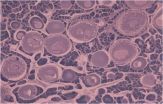A study led by the University of Washington discovered that 25 commonly used scented products emit an average of 17 chemicals each. Of the 133 different chemicals detected, nearly a quarter are classified as toxic or hazardous under at least one federal law. Only one emitted compound was listed on a product label, and only two were publicly disclosed anywhere. The article is published online today in the journal Environmental Impact Assessment Review.
"We analyzed best-selling products, and about half of them made some claim about being green, organic or natural," said lead author Anne Steinemann, a UW professor of civil and environmental engineering and of public affairs. "Surprisingly, the green products' emissions of hazardous chemicals were not significantly different from the other products."
More than a third of the products emitted at least one chemical classified as a probable carcinogen by the U.S. Environmental Protection Agency, and for which the EPA sets no safe exposure level.
Manufacturers are not required to disclose any ingredients in cleaning supplies, air fresheners or laundry products, all of which are regulated by the Consumer Product Safety Commission. Neither these nor personal care products, which are regulated by the Food and Drug Administration, are required to list ingredients used in fragrances, even though a single "fragrance" in a product can be a mixture of up to several hundred ingredients, Steinemann said.
So Steinemann and colleagues have used chemical sleuthing to discover what is emitted by the scented products commonly used in homes, public spaces and workplaces.
The study analyzed air fresheners including sprays, solids and oils; laundry products including detergents, fabric softeners and dryer sheets; personal care products such as soaps, hand sanitizers, lotions, deodorant and shampoos; and cleaning products including disinfectants, all-purpose sprays and dish detergent. All were widely used brands, with more than half being the top-selling product in its category.
Researchers placed a sample of each product in a closed glass container at room temperature and then analyzed the surrounding air for volatile organic compounds, small molecules that evaporate off a product's surface. They detected chemical concentrations ranging from 100 micrograms per cubic meter (the minimum value reported) to more than 1.6 million micrograms per cubic meter.
The most common emissions included limonene, a compound with a citrus scent; alpha-pinene and beta-pinene, compounds with a pine scent; ethanol; and acetone, a solvent found in nail polish remover.
All products emitted at least one chemical classified as toxic or hazardous. Eleven products emitted at least one probable carcinogen according to the EPA. These included acetaldehyde, 1,4-dioxane, formaldehyde and methylene chloride.
The only chemical listed on any product label was ethanol, and the only additional substance listed on a chemical safety report, known as a material safety data sheet, was 2-butoxyethanol.
"The products emitted more than 420 chemicals, collectively, but virtually none of them were disclosed to consumers, anywhere," Steinemann said.
Because product formulations are confidential, it was impossible to determine whether a chemical came from the product base, the fragrance added to the product, or both.
Tables included with the article list all chemicals emitted by each product and the associated concentrations, although they do not disclose the products' brand names.
"We don't want to give people the impression that if we reported on product 'A' and they buy product 'B,' that they're safe," Steinemann said. "We found potentially hazardous chemicals in all of the fragranced products we tested."
The study establishes the presence of various chemicals but makes no claims about the possible health effects. Two national surveys published by Steinemann and a colleague in 2009 found that about 20 percent of the population reported adverse health effects from air fresheners, and about 10 percent complained of adverse effects from laundry products vented to the outdoors. Among asthmatics, such complaints were roughly twice as common.
The Household Product Labeling Act, currently being reviewed by the U.S. Senate, would require manufacturers to list ingredients in air fresheners, soaps, laundry supplies and other consumer products. Steinemann says she is interested in fragrance mixtures, which are included in the proposed labeling act, because of the potential for unwanted exposure, or what she calls "secondhand scents."
As for what consumers who want to avoid such chemicals should do in the meantime, Steinemann suggests using simpler options such as cleaning with vinegar and baking soda, opening windows for ventilation and using products without any fragrance.
"In the past two years, I've received more than 1,000 e-mails, messages, and telephone calls from people saying: 'Thank you for doing this research, these products are making me sick, and now I can start to understand why,'" Steinemann said.
INFORMATION:
Steinemann is currently a visiting professor in civil and environmental engineering at Stanford University. Co-authors are Ian MacGregor and Sydney Gordon at Battelle Memorial Institute in Columbus, Ohio; Lisa Gallagher, Amy Davis and Daniel Ribeiro at the UW; and Lance Wallace, retired from the U.S. Environmental Protection Agency. The research was partially funded by Seattle Public Utilities.
For more information, contact Steinemann at acstein@uw.edu or 206-616-2661. Steinemann is currently at Stanford University as a visiting professor in civil and environmental engineering.
Battelle media contacts: Katy Delaney at 614-424-7208 or delaneyk@battelle.org and T.R. Massey at 614-424-5544 or masseytr@battelle.org.
More information on the project is at http://depts.washington.edu/exposure/
More information on volatile organic compounds is available from the U.S. Environmental Protection Agency (http://www.epa.gov/iaq/voc.html) and the National Library of Medicine (http://toxtown.nlm.nih.gov/text_version/chemicals.php?id=31
END

